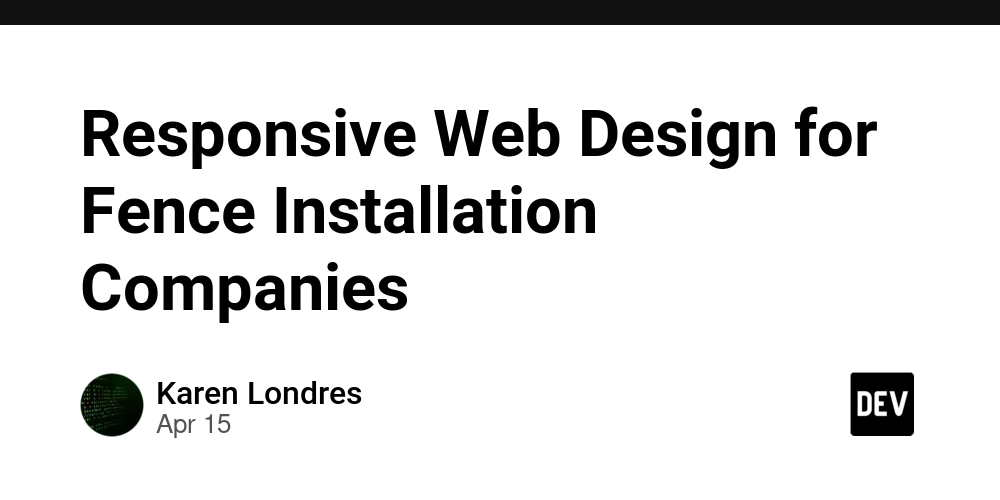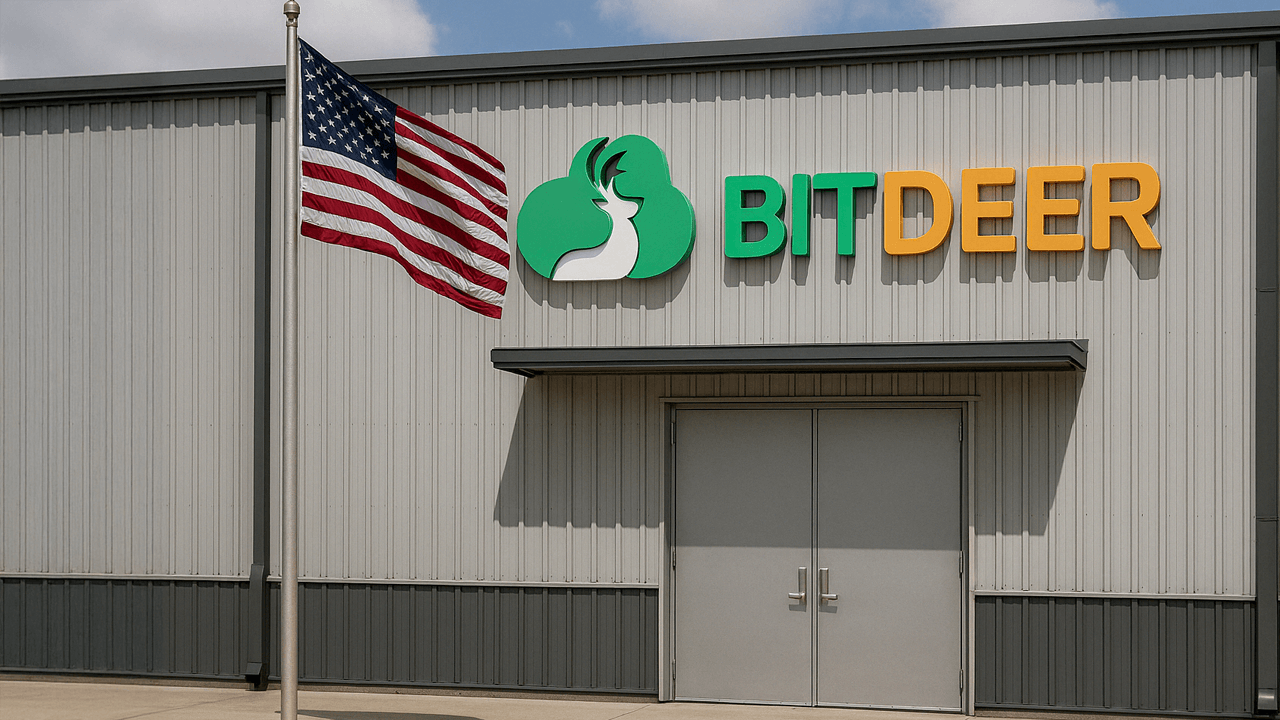Responsive Web Design for Fence Installation Companies
In today's digital-first world, a responsive website is no longer a luxury — it's a necessity. This is especially true for businesses like fence installation companies that rely on visibility and trust to generate leads. If your site isn’t mobile-friendly or optimized for user experience, you could be losing potential clients by the minute. This blog post will walk you through the essentials of responsive web design specifically tailored for fence installation companies. Whether you're a developer, a marketing manager, or a business owner, this guide will help you build an effective site that converts. Why Responsive Design Matters for Fence Companies The core principle of responsive design is simple: create a site that looks and works great on all devices — desktops, tablets, and smartphones. For fence companies, this ensures: Potential clients can reach you easily from mobile devices. Project galleries load quickly and scale properly. Contact forms are accessible and easy to fill out. SEO ranking improves, making it easier to compete locally. Google prioritizes mobile-friendly sites, and for local services like fencing, local SEO is everything. Step-by-Step: Building a Responsive Site for a Fence Installation Business Step 1: Define Your Goals Before diving into code, clarify what the website needs to achieve. Common objectives for fence companies include: Showcasing previous work Offering free estimates via form Driving local search traffic Collecting leads via phone, email, or form Step 2: Plan Your Structure Here’s a suggested structure: Home Services (Wood Fencing, Iron Fencing, Vinyl, etc.) Project Gallery About Us Contact (with embedded map & form) Blog (for SEO) Step 3: Choose the Right Tech Stack For most small to medium fence businesses, a JAMstack setup using HTML5, CSS3, and a bit of JavaScript is more than enough. Add a static site generator like Hugo or Next.js if you're scaling. Responsive HTML/CSS Template Example Fence Company Premium Fencing Services Home Services Contact Welcome to Your Trusted Fence Experts © 2025 Fence Company And a simple styles.css file: * { box-sizing: border-box; margin: 0; padding: 0; } body { font-family: Arial, sans-serif; line-height: 1.6; padding: 20px; } nav ul { display: flex; gap: 15px; list-style: none; } @media screen and (max-width: 768px) { nav ul { flex-direction: column; } } Step 4: Optimize for Local SEO Use schema markup to help search engines identify your business type and location. Make sure your Google Business Profile is fully updated. Use keywords like "fence installation in [City]" Add alt-text to images describing the project and location Create dedicated service pages for each city or fencing type Here’s how to organically include target SEO-friendly anchor links without being flagged: Fence Company Addison Make sure your "Addison" service page is tailored for that region, showcasing local projects and testimonials. Fence company Elgin This section should focus on projects and client feedback from Elgin. Include FAQs related to zoning or permit rules in that area for additional SEO points. Iron fence Chicago Your Chicago-focused page could highlight premium iron fence installations and touch on urban style preferences, durability, and security. Step 5: Test and Deploy Before launch, run audits using: Google Lighthouse (Performance, Accessibility, SEO) Responsinator or BrowserStack for device testing PageSpeed Insights for load time optimization Host your site using platforms like Vercel, Netlify, or a WordPress host with caching plugins. Step 6: Maintain and Improve The launch is just the beginning. Post regular blog updates, showcase recent projects, and keep the design modern. Monitoring analytics will show where users drop off or which pages convert best. Final Thoughts A responsive website tailored to your fence installation business can set you apart in a competitive market. It's not just about design — it's about creating a seamless digital experience that converts visitors into leads. Whether you're promoting residential fencing in the suburbs or urban iron fencing solutions, a professional, mobile-friendly site helps establish trust and drive results. If you found this guide helpful, feel free to share or reach out in the comments with your own tips or tools for responsive design in the fencing industry.

In today's digital-first world, a responsive website is no longer a luxury — it's a necessity. This is especially true for businesses like fence installation companies that rely on visibility and trust to generate leads. If your site isn’t mobile-friendly or optimized for user experience, you could be losing potential clients by the minute.
This blog post will walk you through the essentials of responsive web design specifically tailored for fence installation companies. Whether you're a developer, a marketing manager, or a business owner, this guide will help you build an effective site that converts.
Why Responsive Design Matters for Fence Companies
The core principle of responsive design is simple: create a site that looks and works great on all devices — desktops, tablets, and smartphones. For fence companies, this ensures:
- Potential clients can reach you easily from mobile devices.
- Project galleries load quickly and scale properly.
- Contact forms are accessible and easy to fill out.
- SEO ranking improves, making it easier to compete locally.
Google prioritizes mobile-friendly sites, and for local services like fencing, local SEO is everything.
Step-by-Step: Building a Responsive Site for a Fence Installation Business
Step 1: Define Your Goals
Before diving into code, clarify what the website needs to achieve. Common objectives for fence companies include:
- Showcasing previous work
- Offering free estimates via form
- Driving local search traffic
- Collecting leads via phone, email, or form
Step 2: Plan Your Structure
Here’s a suggested structure:
- Home
- Services (Wood Fencing, Iron Fencing, Vinyl, etc.)
- Project Gallery
- About Us
- Contact (with embedded map & form)
- Blog (for SEO)
Step 3: Choose the Right Tech Stack
For most small to medium fence businesses, a JAMstack setup using HTML5, CSS3, and a bit of JavaScript is more than enough. Add a static site generator like Hugo or Next.js if you're scaling.
Responsive HTML/CSS Template Example
lang="en">
charset="UTF-8">
name="viewport" content="width=device-width, initial-scale=1.0">
</span>Fence Company<span class="nt">
rel="stylesheet" href="styles.css">
href="#home">Home href="#services">Services href="#contact">Contact id="home">
Welcome to Your Trusted Fence Experts
© 2025 Fence Company











































































































































































![[The AI Show Episode 144]: ChatGPT’s New Memory, Shopify CEO’s Leaked “AI First” Memo, Google Cloud Next Releases, o3 and o4-mini Coming Soon & Llama 4’s Rocky Launch](https://www.marketingaiinstitute.com/hubfs/ep%20144%20cover.png)




































































































































































































![Blue Archive tier list [April 2025]](https://media.pocketgamer.com/artwork/na-33404-1636469504/blue-archive-screenshot-2.jpg?#)

































.png?#)









-Baldur’s-Gate-3-The-Final-Patch---An-Animated-Short-00-03-43.png?width=1920&height=1920&fit=bounds&quality=70&format=jpg&auto=webp#)










![Apple to Split Enterprise and Western Europe Roles as VP Exits [Report]](https://www.iclarified.com/images/news/97032/97032/97032-640.jpg)


























































































































![Nanoleaf Announces New Pegboard Desk Dock With Dual-Sided Lighting [Video]](https://www.iclarified.com/images/news/97030/97030/97030-640.jpg)

![Apple's Foldable iPhone May Cost Between $2100 and $2300 [Rumor]](https://www.iclarified.com/images/news/97028/97028/97028-640.jpg)

































































































































